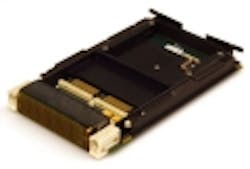DARPA looks to SAIC to develop lightweight, flexible solar panels rugged enough for military photovoltaics applications
ARLINGTON, Va., 10 June 2010. Scientists at the U.S. Defense Advanced Research Projects Agency (DARPA) in Arlington, Va., are looking to researchers at Science Applications International Corp. (SAIC) in McLean, Va., to make revolutionary improvements in portable solar panels that generate electricity from sunlight.
DARPA is awarding a $4.5 million contract to SAIC for the Low-Cost Lightweight Portable Photovoltaics (PoP) program to reduce the mass and cost of portable photovoltaic devices to generate solar power for aerospace and defense applications, while maintaining high efficiency in power conversion.
Initially SAIC will quickly demonstrate a portable, low-cost, low-mass, flexible and durable solar cell to generate solar energy with a power conversion efficiency comparable to stationary commercial photovoltaic panels, with an eye to developing prototypes that eventually are lightweight and rugged enough for military and aerospace applications.
SAIC experts will develop efficient, inexpensive portable photovoltaic devices in four primary areas: light acquisition and energy capture; carrier extraction; robust and durable portability; and flexibility.
In light acquisition and energy capture, SAIC will develop efficient photovoltaic devices active across a broad absorbance spectrum that lose minimal photons to reflection, scattering, and related processes. Company experts will consider on-board optical techniques to boost photovoltaic efficiency and reduce device size to improve how incoming photons are captured at air mass 1.5 solar illumination gathered at 90 and 45 degrees.
SAIC also will find ways to convert photons efficiently to electrical power by keeping electron-hole recombination and resistive losses to a minimum. Company engineers also will find engineering and manufacturing techniques to build rugged, lightweight solar panels rugged enough for military applications, with resistance to puncture and rough handling.
Finally, SAIC will consider how to develop and manufacture rugged, lightweight solar panels flexible enough to be fitted to backpacks, tents, and other curved surfaces, as well as to be transported in a wide variety of vehicles.
To develop panels rugged, lightweight, and flexible enough for these kinds of applications, SAIC experts will consider technologies that incorporate thin-film semiconductors, microcrystalline semiconductors, or materials with similar properties.
For more information contact DARPA online at www.darpa.mil, or SAIC at www.saic.com.
Follow me on TwitterJoin the PennWell Aerospace and Defense Media Group on Linkedin at http://bit.ly/9MXl9
Become a fan of Military & Aerospace Electronics on Facebook at http://bit.ly/1VGM0Q
Post your aerospace and defense-related material to the #milaero community on Twitter. Use the #milaero hashtag.
Join your industry colleagues in the Command Post community online at http://community.milaero.com
